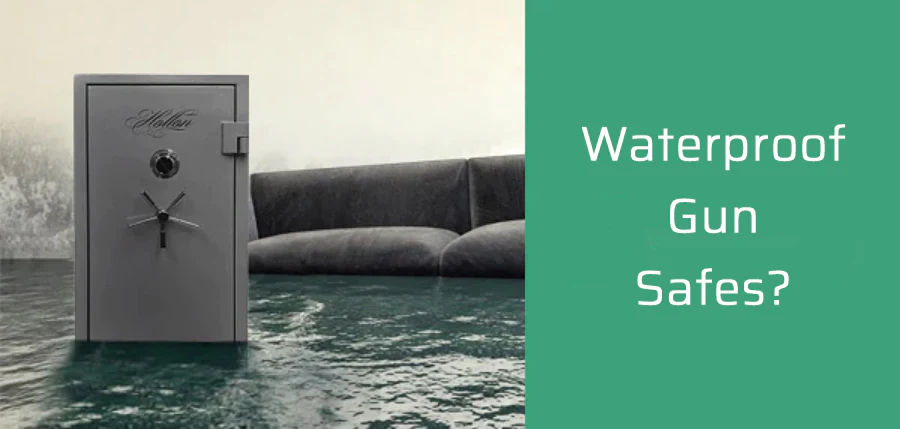If you’re looking to buy a gun safe you’re likely looking for protection from all angles, including water damage. Water can not only compromise the action and safety of your weapons, but it will also destroy valuable (sometimes irreplaceable) documents.
The moment you start searching online for waterproof safes you will be inundated with ads for companies who claim to have waterproof safes. Are these safes truly waterproof, or would you end up with a cardboard box? At The Safe Keeper, we get questions from our customers all the time about water protection, and we thought we would attempt to answer those questions succinctly here for you.
The Simple Answer
The truth is, no safe is actually waterproof, because the definition of waterproof is to be impervious to water. If you submerge a safe long enough the word “impervious” will no longer fit because the water will find a way in at some point. Being that all safes are made up of components attached to other components, it’s nearly impossible to guarantee an actual impervious safe. If you come across a brand that claims complete protection from water, this is the time to become skeptical and start asking questions. But don’t let this discourage you; we do have good news and some expert tips to help maximize the water protection of your safe.
The Good News
Although a completely waterproof safe is not something you are likely to find, there are some things to know that will greatly assist in your search for the safe that best suits your needs in terms of water-resistance.
The first thing to look for is an ETL rating. This rating can provide some peace-of-mind that the safe has been tested for a certain amount of time under a certain depth. The ETL rating is definitely something worth researching when specifically looking for a safe with a good water and/or fire resistance rating.
The next thing to look for is a PALUSOL® seal around the door frame. There are many technical words to describe it, but essentially it is a thin gasket-type material that runs around the frame of the door and is heat-activated between 212°-250°F. Although this is not necessarily a flood prevention material, it assists in overall water resistance. It especially helps in the event of a fire. When it is activated by heat it will expand to 5-10 times its original size and seal all gaps that the door may have in order to prevent smoke and heat from making it inside. This seal will also be very effective in keeping out water and other substances discharged from a fire hose, fire extinguisher, or sprinkler system. This is very beneficial considering the fact that putting out a house fire can cost the use of 2,500-10,000 gallons of water.
It’s also worth noting that the typical fire or water resistant safe does not have a significant burglary rating. The inverse is also sometimes true, so keep that in mind when you’re looking for your safe. Always ask questions to understand what the ratings are on fire, water, and burglary.
Tips For Extra Water Damage Prevention
Even though you will not find a fully waterproof safe, there are some things you can do that will ensure the contents of your safe make it out intact in the event of a flood.
- Build a wood or concrete pedestal for your safe. The further your safe is elevated above ground level the more protected it will be from flooding. This also gives you more time to react and retrieve items in the event of any type of flood.
- Seal off any external holes or compromised areas on the safe to prevent immediate water penetration.
- Placing your guns or valuable items in secondary water resistant containers, such as plastic bags, plastic sealable containers, or waterproof pouches can go a long way in being that final protection from water infiltration.
The truth is, water-damage prevention is really in your hands. If you are in a flood-prone area it would likely benefit you to act on some of the tips above. I truly hope this has been helpful to you in keeping your valuables safe.


